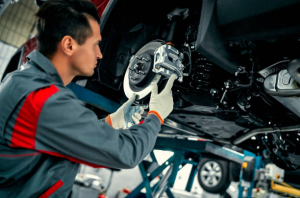How Heavy-Duty Tire Changers Are Revolutionizing Fleet Management
Fleet management is a critical aspect of running businesses that rely on trucks, buses, and other large vehicles. One of the most crucial components of fleet maintenance is ensuring that vehicle tires are in optimal condition. This is where heavy-duty tire changers play a pivotal role in revolutionizing how fleets are managed and maintained.
Importance of Fleet Management
Fleet management involves overseeing a group of vehicles used for commercial purposes. These vehicles are essential for transporting goods, providing services, or carrying passengers. Managing a fleet efficiently includes monitoring vehicle performance, scheduling maintenance, and ensuring compliance with regulations.
The Role of Tires in Fleet Operations
Tires are integral to the performance and safety of fleet vehicles. They bear the weight of the vehicle, provide traction, and contribute to fuel efficiency. In the context of fleet management, keeping tires in good condition is crucial for minimizing downtime, reducing operational costs, and ensuring the safety of drivers and cargo.
Challenges in Tire Maintenance
Maintaining tires in a fleet can be challenging due to several factors:
Frequency of Use: Fleet vehicles often cover long distances and operate for extended hours, leading to faster wear and tear on tires.
Variety of Vehicles: Fleets may include different types of vehicles with varying tire sizes and specifications.
Cost Management: Replacing tires and managing tire-related downtime can be costly for fleet operators.
Time Constraints: Minimizing vehicle downtime is essential to maintain operational efficiency.
Introduction to Heavy-Duty Tire Changers
Heavy-duty tire changers are specialized machines designed to handle the large and robust tires commonly found on trucks, buses, and heavy equipment. These tire changers are engineered to efficiently remove and replace tires on vehicles with rim sizes typically ranging from 15 inches to over 30 inches in diameter.
How Heavy-Duty Tire Changers Work
Heavy-duty tire changers utilize advanced hydraulic systems and durable components to facilitate the tire changing process. The key components and functions include:
Hydraulic Arms: These arms assist in lifting and positioning heavy tires and rims.
Bead Breakers: Mechanisms designed to break the bead seal between the tire and the rim, allowing for tire removal.
Mounting and Demounting Tools: Tools that aid in removing old tires and mounting new ones onto the rims.
Robotic Assistance: Some models may feature robotic arms or semi-automated processes to enhance efficiency and reduce manual labor. With industry-leading brands like Hofmann, fleet operators have access to some of the most robust and efficient heavy-duty tire changers on the market, capable of handling the most demanding tasks.
Advantages of Heavy-Duty Tire Changers
Increased Efficiency: Heavy-duty tire changers streamline the tire replacement process, reducing the time required for each tire change.
Reduced Labor Costs: Automated and semi-automated functions minimize the need for extensive manual labor, thus lowering operational costs.
Versatility: These machines can handle a wide range of tire sizes and types, accommodating the diverse needs of different fleet vehicles.
Safety: Specialized equipment ensures that tires are changed safely, reducing the risk of injuries to maintenance personnel.
Long-Term Cost Savings: By extending tire lifespan and minimizing downtime, heavy-duty tire changers contribute to significant cost savings over time.
Case Studies: Application in Fleet Management
Case Study 1: Transportation Company A
Transportation Company A operates a fleet of 50 trucks that deliver goods across the region. Before adopting heavy-duty tire changers, they faced frequent delays due to manual tire changing processes. After investing in specialized equipment, they reported a 30% reduction in downtime associated with tire maintenance tasks. This improvement translated into increased operational efficiency and reduced maintenance costs.
Case Study 2: Bus Company B
Bus Company B provides public transportation services in a bustling urban area. With a fleet of 100 buses, they prioritize passenger safety and operational reliability. By integrating heavy-duty tire changers into their maintenance routines, Bus Company B improved their ability to respond swiftly to tire-related issues, ensuring that buses remained on schedule and reducing service disruptions.
Future Trends and Innovations
The field of heavy-duty tire changers continues to evolve with advancements in technology and engineering. Future trends may include:
Integration with Fleet Management Systems: Tire changers could be integrated with digital platforms that track tire performance and predict maintenance needs.
Enhanced Automation: Further automation could reduce dependency on manual intervention, enhancing operational efficiency.
Environmental Sustainability: Innovations in tire changer design may focus on reducing energy consumption and minimizing environmental impact.
Conclusion
In conclusion, heavy-duty tire changers represent a significant advancement in fleet management practices. By improving efficiency, reducing costs, and enhancing safety, these specialized machines contribute to the overall success of fleet operations. As technology continues to evolve, the role of heavy-duty tire changers will likely become even more integral in ensuring the reliability and sustainability of commercial vehicle fleets around the world.
The post How Heavy-Duty Tire Changers Are Revolutionizing Fleet Management appeared first on My Car Heaven.


